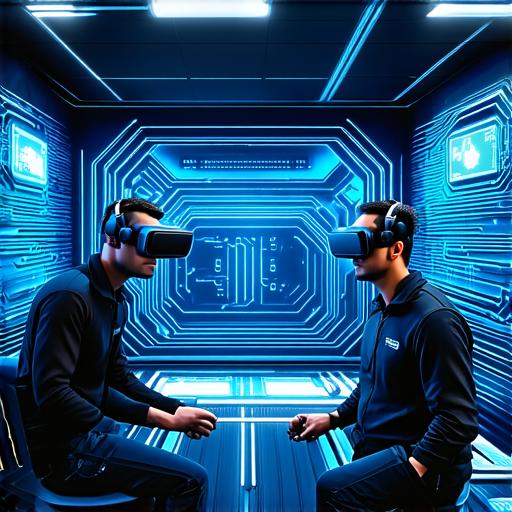
How real can virtual reality feel?

What is Virtual Reality?
Virtual reality is an immersive technology that creates a simulated environment for users to interact with. It uses a combination of sensors, cameras, and displays to create a 3D world that feels like it’s real. The goal of VR is to provide users with a sense of presence in the virtual world, allowing them to feel as though they are physically there.
Realism in VR
Virtual reality technology has come a long way in creating realistic environments for users to interact with. With advancements in graphics and motion tracking, VR systems can now track users’ movements with high accuracy, allowing them to move through virtual worlds seamlessly. Additionally, improvements in haptic feedback have made it possible for users to feel physical sensations in the virtual world, such as vibrations or resistance from objects.
Case Studies and Personal Experiences
One example of how close VR has come to replicating reality is the use of VR training in medical fields. In a study published in JAMA Internal Medicine, researchers found that surgeons who trained using VR were able to perform complex procedures with greater accuracy than those who did not use VR. This suggests that VR can provide a realistic and effective way for professionals to learn new skills.
Another example is the use of VR in gaming. Games like “Beat Saber” and “Job Simulator” have become incredibly immersive, allowing users to feel as though they are physically interacting with the virtual world. In fact, a study published in the Journal of Virtual Reality found that users reported feeling more physically active while playing VR games than they did while playing traditional console or PC games.
Real-Life Examples
Virtual reality has also been used in real-life situations to provide users with a sense of presence in the virtual world. For example, NASA has used VR technology to simulate spacewalks for astronauts, allowing them to practice their skills in a safe and controlled environment. Similarly, architects have used VR to visualize and test designs for buildings and structures, providing a more realistic way to evaluate the final product.
Expert Opinions
When it comes to how real VR can feel, experts are divided on the issue. Some believe that while VR technology has come a long way, there is still work to be done in order to make it feel truly immersive. “Virtual reality still doesn’t feel real to me,” says Dr. Richard Devine, associate professor of cognitive psychology at the University of York. “It’s an amazing technology, but it still lacks some of the subtleties and nuances that our brains are used to in the real world.”
Others believe that VR is already quite realistic and will only continue to improve as technology advances. “Virtual reality has come a long way, and with continued improvements in graphics and haptic feedback, it’s not far off from feeling truly immersive,” says Dr. Markus Gross, professor of computer science at the University of British Columbia.
The Future of VR
Despite ongoing debates about how real VR can feel, there is no denying that the technology has come a long way and will continue to improve. As developers and researchers work to make VR more immersive and realistic, we can expect to see even more impressive case studies and personal experiences in the future.
FAQs
Q: How close has VR come to replicating reality?
A: Virtual reality technology has come a long way in creating realistic environments for users to interact with, but there is still work to be done in order to make it feel truly immersive.
Q: What are some real-life examples of how VR has been used?
A: Virtual reality has been used in a variety of fields, including medicine, gaming, and architecture. For example, NASA has used VR technology to simulate spacewalks for astronauts, while architects have used VR to visualize and test designs for buildings and structures.


